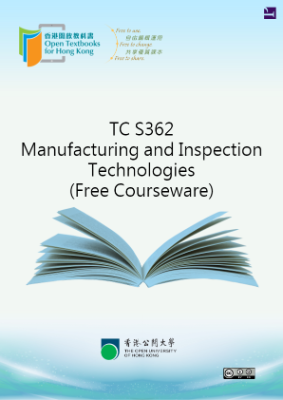Manufacturing systems
Let’s start by defining what we mean by manufacturing. Manufacturing is not a new concept. As early as the Stone Age , human beings used stones as tools to cut materials, such as tree branches, bamboo, and rattan and then connect different component parts to form simple products such as wooden sampans, tripods and huts. A sharp edged stone alone can cut soft things. When the stone is tied to a stick it becomes a hammer or an axe. The hammer or axe can be used for hunting and killing animals 1 and even cut them into pieces of meat for consumption. At this stage humans started making tools and using them in simple processes to create products for their own use.
After years of development, human beings invented more tools and even machines that could provide higher power during operations and further assist workers to produce products in a faster manner and of better quality. The higher production rate gave rise to the concept of manufacturing with the use of machinery, tools and equipment through a series of planned activities, either by manual and/or automation systems operations, for producing goods on a large scale for use and/or sale.
Today, the term ‘manufacturing (In some industries, instead of manufacturing, the term ‘fabrication’ is commonly used, such as the fabrication of semiconductors and steel.)’ is commonly applied to large scale industrial production, by which raw materials are treated through various controlled processes, then different parts of materials are connected or joined together to form the finished goods with the desired appearance and purpose. For example, cloth in the weaving industry is produced from cotton which has to go through a series of processes and treatments. In the toy industry, different component parts are assembled and joined together to become a single unit product for entertaining children and adults. Another example is a television, which is also produced by assembling many components together. After testing and adjusting the various parts, audio signals and video images can be displayed to viewers.
In a market economy, mass production is the usual process in manufacturing. Products are produced under the consideration of cost effectiveness so that buyers and/or consumers receive the maximum benefit. A number of different manufacturing systems have been adopted to ensure the highest cost-effectiveness in production. In the global free market, there are also certain degrees of government regulation, such as labour, safety, quality, and environmental regulations. These regulations protect workers’ rights to fair employment terms and, importantly, ensure that the goods produced and the waste generated are not harmful to human beings and the earth.











